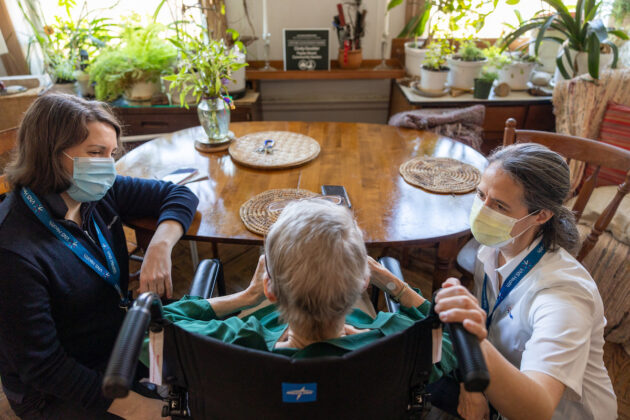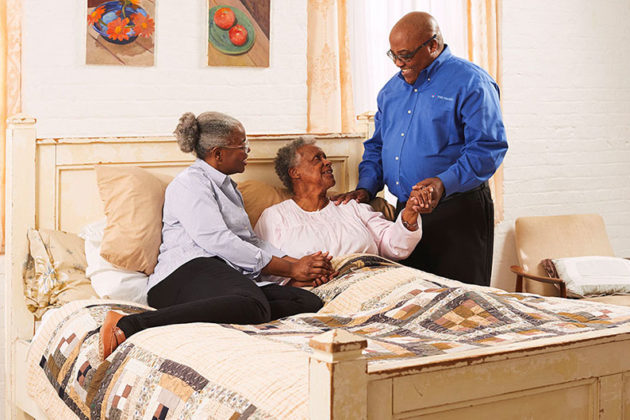
Hospice is a word most people have heard before. It’s a type of care for people with a serious illness who are nearing the end of life, and it centers around improving a person’s comfort and quality of life. Hospice can even help with emotional support for loved ones.
Despite how common the word hospice is, there is still a lot of confusion about it. As a result, some people miss out on the important benefits that hospice can offer.
In the U.S., over a million patients benefit from hospice care each year.
Knowing the truth about hospice helps people make informed decisions about care. Here are six hospice facts to combat common hospice myths.
Fact: Hospice is for people with any life-limiting illness — not just cancer.
Many people assume hospice only helps people with cancer. In fact, it’s for people with any terminal illness. This includes dementia, kidney failure, heart failure, and chronic obstructive pulmonary disease (COPD), for example, and more.
Hospice helps people manage symptoms. For instance, a person with heart failure might have shortness of breath and pain. A person with COPD might have an ongoing cough. People with any life-limiting illnesses may also suffer from anxiety.
Through hospice, people can find relief from these symptoms so they can focus on enjoying the present.
Do you have questions about hospice care? Contact VNS Health to learn more about how it can benefit you or your loved one.
Fact: Hospice isn’t only for the last few days of life.
Hospice care is designed to help a person with a terminal illness and their family over several months. Many caregivers wish they had enrolled their loved ones in hospice sooner. Starting earlier would allow their loved ones to benefit longer from this kind of care. People in hospice and their caregivers will work with their doctor to decide determine when it’s time to start hospice.
If a person’s condition improves, hospice services can be stopped, and the care plan can be adjusted.
Fact: Hospice doesn’t mean giving up.
Hospice puts the focus on easing symptoms. Making the decision to use hospice services improves a person’s comfort and quality of life. It helps ease symptoms like pain, shortness of breath, and worry or fear.
Hospice can also help those in hospice live longer and allow them to spend more time with loved ones in comfort.
Hospice is often the right choice for someone who has reached a certain point in their illness. Rather than giving up, it’s a chance to focus on making the most of a person’s last months of life.
Fact: Hospice provides emotional and spiritual support in addition to physical care.
Hospice isn’t just about physical comfort for the sick person. Hospice supports a person in their emotional and spiritual journey, as well.
What this looks like will depend on a person’s needs. Hospice can help them:
- Come to terms with any regrets
- Take care of unfinished business
- Talk with loved ones
- Find peace
- Connect with clergy or a faith community, as needed
This support extends to family and loved ones, too. For instance, counseling can help families make choices about care. Grief support, including grief support groups, is also available for 13 months after death. This can help family members through the first year of milestones and major moments without their loved one.
Fact: Hospice is a type of care not a place.
Hospice can be provided in a hospice residence. However, it can also be wherever a person calls home — a private home, apartment, or nursing home.
With in-home hospice care, nurses, therapists, social workers, home health aides, and other caregivers make home visits (or visits to another location) to provide care. This allows people to enjoy the comforts of home, such as sleeping in their own bed and being close to loved ones.
Fact: You don’t need to change your doctors during hospice.
Hospice care is for terminal illness only. If a person sees other health care providers for other illnesses, that won’t change. During the hospice admissions meeting, the nurse will ask the sick person or their caregiver if they want their doctors to be part of their hospice care team.
Whatever a family chooses, the hospice care team will work together to address symptoms, improve quality of life, and make sure people in hospice are as comfortable as possible.



